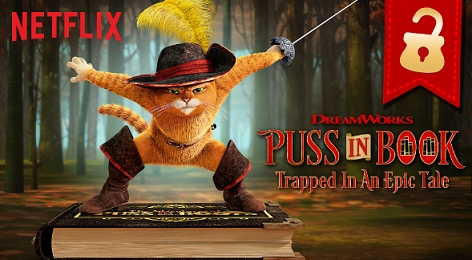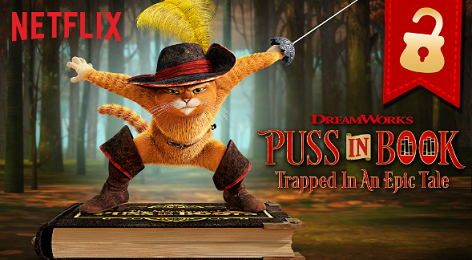
 Netflix is experimenting with non-linear storytelling in which viewers can control the narrative of a show.
Netflix is experimenting with non-linear storytelling in which viewers can control the narrative of a show.
Starting with the children’s program Puss in Book, Netflix is testing out interactive plots where viewers can pick their own “branching” narratives. This allows children to engage with the show in a similar way to a choose-your-own-adventure book. Netflix also tested the concept with a July episode of Buddy Thunderstruck, its original stop-motion cartoon from the studio behind “Robot Chicken.”
This concept has been explored before with Clue, a film inspired by the board game of the same name, which was distributed to cinemas with multiple endings. However, Netflix is the first major entertainment platform of its kind to explore this technique. “Creators have been telling stories in non-linear ways for a long time,” Carla Engelbrecht Fisher, Netflix’s director of product innovation, told Rolling Stone. “If they’re telling stories in different ways, what we’re asking is what kind of stories can Netflix do that no one else can do? We’re not tied to the formats of cable networks; our ecosystem is built entirely for interactive devices.”
By implementing interactive shows, Netflix is enabling a two-way conversation between their audience and their media. This interactivity may also encourage viewers to engage more deeply with a show and increase emotional engagement with different characters. Nevertheless, there are still questions about whether it will be difficult to engage adults and whether having this sort of control takes away from what the storyteller envisioned. Experiences around a show will also be personalized, which means that we will lose something shared and discussions around a show will change.
At last year’s Future of StoryTelling summit, Affectiva, a tech company specializing in emotional AI, described their take on storytelling using the concept of “reactive narratives,” dynamic stories which react to our emotions in real-time by using facial recognition. “If they’re interested, you keep going. If they’re not, you change the course of the story,” says Affectiva’s CEO and co-founder Rana el Kaliouby. The start-up is working on ways to integrate emotions into consumer’s experiences with entertainment.
If our entertainment can sense emotion, it can respond to how we’re feeling and tailor our experiences so we get the most enjoyment out of it. Karen Palmer, a multi-disciplinary immersive filmmaker, has experimented with interactive storytelling to create RIOT, an emotionally responsive film that uses AI, machine learning, eye tracking and facial recognition. Inspired by the riots in Ferguson, the film allows viewers to experience the intensity of such an extreme event.
Whether to inspire, engage, or bring awareness to a social issue, interactive storytelling can change the landscape of film and television. Brands across industries can harness the latest technologies to explore the potential of this technique, whether through pop-up consumer experiences or campaigns. By combining technology with their customer data, brands can engage consumers in new, personalized ways and tell stories that keep them ahead of the curve.
Source: JWT Intelligence
